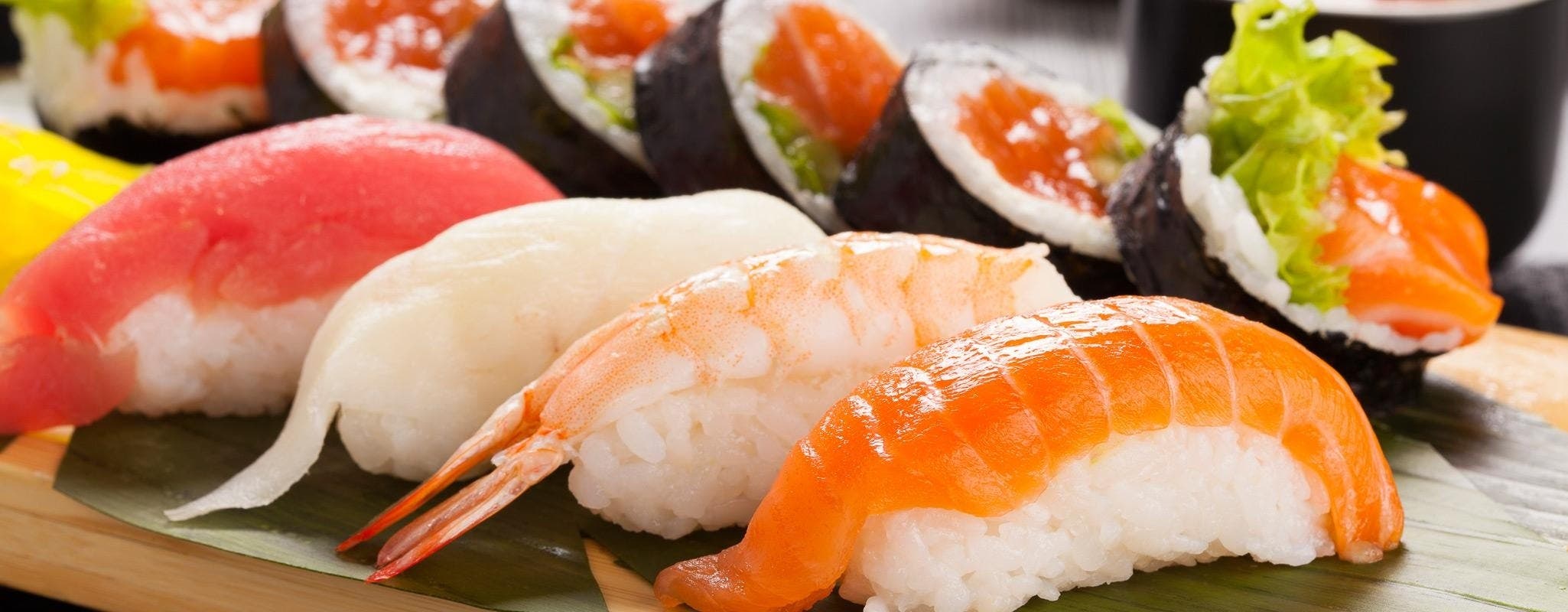|
Appetizers Edamame
|
|
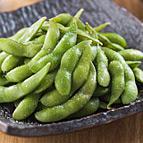
|
Whole, steamed pods of soybeans may be fresh or frozen, but both make an equally tasty and nutritious way to kick off your meal, and they are a zero Points food. “Any time you can get a plant-based protein, go for it,” says Henderiks. “These are an even better choice than a salad because you are getting the right balance of protein and carbs to fill you up at the beginning of the meal.”
|
|
Miso soup
|
|
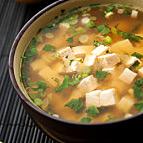
|
This traditional Japanese soup is not to be missed. Cubes of tofu and seaweed add some substance to this flavorful broth, which delivers a SmartPoints value of just 1 per steaming cup. “When you see clear soup, you know it’s OK,” says Henderiks. “There is some sodium here, but with the potassium, minerals and flavour, there are so many saving graces, it’s totally worth it!”
|
|
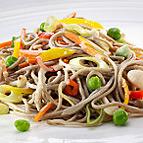
|
Cha soba noodle salad
Noodles generally equal bad news, but Japanese soba is a rare breed made from buckwheat, which has no relation to actual wheat. Soba noodles are gluten-free and lighter in density and calories. A typical 4-ounce portion has a SmartPoints value of only 4.
|
|
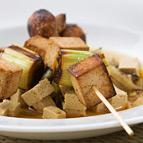
|
Agedashi tofu
In this traditional dish, a breading of potato or cornstarch prepares it for the fryer, where it gets a crisp exterior before a sprinkling of flavourful bonito (fish) flakes and dashi. “This is a good way to introduce someone new to tofu, because the taste and the flavour are really fantastic,” says Henderiks. Because it is fried, assume a SmartPoints value of 7 for a typical 5-ounce serving. Lighten it up: Usually served in small cubes, this app is primed for sharing. Ask the chef to cube it into enough pieces so everyone gets a taste.
|
|
Mains
|
|
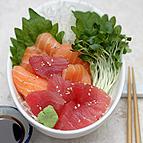
|
Sashimi
“This is clearly one of the best things you can eat. You almost can’t get any healthier,” says Henderiks. (However, without the benefit of a rice buffer, some diners find sashimi a difficult food.) Fatty fish like salmon and mackerel are slightly higher in calories, but as all seafood is 0 SmartPoints, this is a smarter choice.
|
|
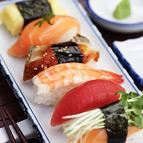
|
Sushi
Take that sashimi and place it on a little pillow of rice and you have nigiri sushi – the stuff most of us picture when we think “sushi bar.” The rice is gently flavoured with vinegar, and each piece of sushi should amount to a single bite, according to Hiyakawa. That rice will add SmartPoints values to the bottom line; often ordered in pairs, most nigiri sushi has a SmartPoints value of 1 for two small pieces. Lighten it up: If you don't want to go with sashimi, limit your sushi intake of eel, tuna, salmon, mackerel, octopus, and egg.
|
|
Rolls
|
|
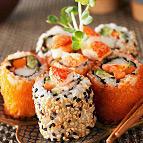
|
Spicy tuna roll
Also called maki sushi, rolls are the sandwiches of the sushi bar. They double up on the rice to fill you up, and they layer ingredients, like yellowtail fish and scallions, bound together with a sheet of nori (seaweed). Spicy tuna roll is one of the most popular preparations, with a SmartPoints value of about 6 for a typical six-piece roll.Lighten it up: “You want to choose a roll that has whole fish. Anything that is chopped up means there is probably added fat,” says Henderiks. Try a regular tuna roll and spice it up with wasabi to save 3 SmartPoints value.
|
|
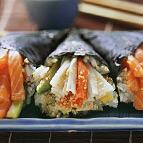
|
Hand roll
According to Hiyakawa, many sushi connoisseurs end their meal with a hand roll (temaki), which is different mostly in its technique of construction, a chance for chefs to show off their craft. You’re likely to get some artistic license with your tuna roll, including mountain potato or a dollop of fish roe.
|
|
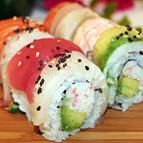
|
Rainbow roll
“Of the specialty rolls, this is one of my favorite because it’s everything sushi should be — pretty, appealing and flavorful, with a variety of fresh fish,” says Henderiks. One rainbow roll, often in eight pieces, will do plenty to fill you up, with a SmartPoints value of only about 5. Think of it as piling sashimi on your California roll.
|
|
Non-Sushi Alternatives
|
|
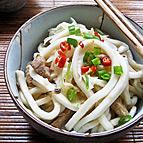
|
Udon noodles
Unlike soba, udon are thick wheat-based noodles, usually prepared in a simple broth. “Make no mistake, you're eating a bowl of pasta,” says Henderiks. A typical serving of 2 cups has a SmartPoints value of 22, so share these as a side, or get your noodle fix with a soba salad.
|
|
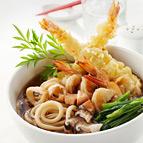
|
Tempura
Consisting of vegetables and shrimp coated in light batter and deep-fried, a typical sampler of vegetable sticks and shrimp will serve up a SmartPoints value of about 22. Lighten it up: It might seem counterintuitive, but the vegetables are the biggest culprit in this dish. “They are like sponges and soak up the oil,” says Henderiks.
|
|
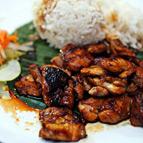
|
Teriyaki chicken
A typical chicken breast, brushed with this sauce of sake, mirin, soy and sugar is a good choice, with a SmartPoints value of about 2. Lighten it up: You’ll often see teriyaki accompanied by a cup of white rice, which adds 6 SmartPoints value. And, if that rice comes fried from the hibachi with a generous squirt of oil, it can add several more. Go for a side of broccoli and keep this sweet-and-savoury dish in check.
|
|
Desserts
|
|
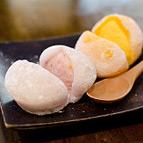
|
Mochi
Golf-ball-sized ice cream wrapped in sweet rice dough, mochi goes beyond chocolate and vanilla, with flavours like green tea (matcha) and red bean (azuki). Because they’re easily shared, mochi makes a good indulgence, says Henderiks. Four mochi ice-cream balls are the equivalent of a half-cup serving of tempura-fried ice cream with a SmartPoints value of 16, so take one for 4 SmartPoints value and pass the plate.
|
|
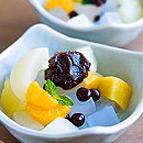
|
Fresh fruit mitsumame
A bowl of fresh strawberries or mixed fruit delivers a lot of satisfaction for 0 SmartPoints value. You might also see it served as traditional mitsumame, a fruit salad with red beans and agar, a sort of seaweed-based Jell-O that is high in fibre with almost no calories. This is a very traditional dish and a refreshing end to a sushi meal.
|
